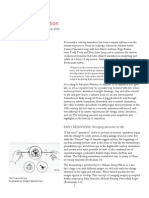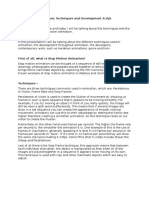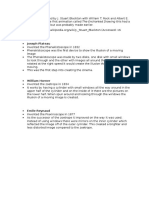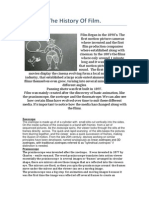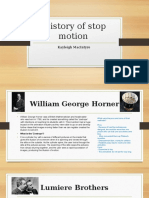0% found this document useful (0 votes)
38 views19 pagesAnimation Tool
The document discusses animation, describing what it is, the history of animation including tools like the zoetrope and praxinoscope, and basic animation concepts and techniques. It explores the uses of animation and latest trends.
Uploaded by
kidd psychoCopyright
© © All Rights Reserved
We take content rights seriously. If you suspect this is your content, claim it here.
Available Formats
Download as PDF, TXT or read online on Scribd
0% found this document useful (0 votes)
38 views19 pagesAnimation Tool
The document discusses animation, describing what it is, the history of animation including tools like the zoetrope and praxinoscope, and basic animation concepts and techniques. It explores the uses of animation and latest trends.
Uploaded by
kidd psychoCopyright
© © All Rights Reserved
We take content rights seriously. If you suspect this is your content, claim it here.
Available Formats
Download as PDF, TXT or read online on Scribd
/ 19
































